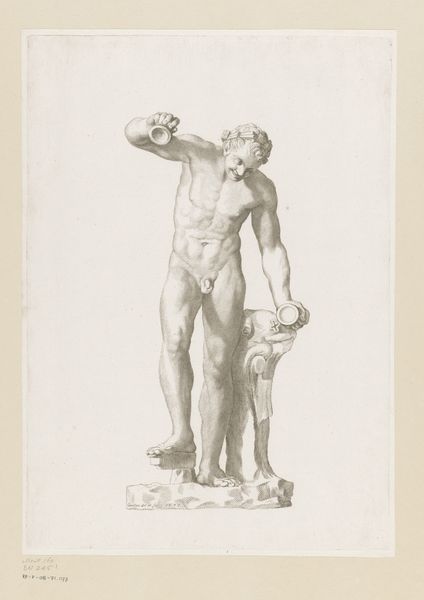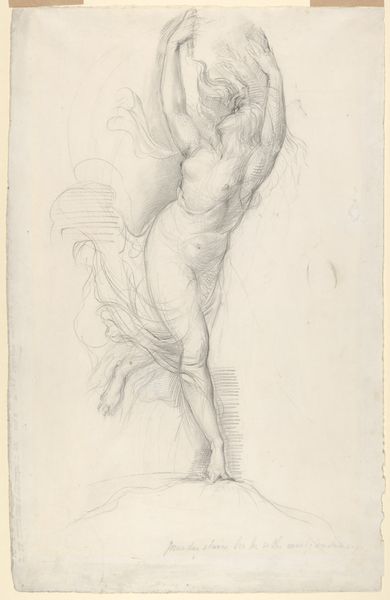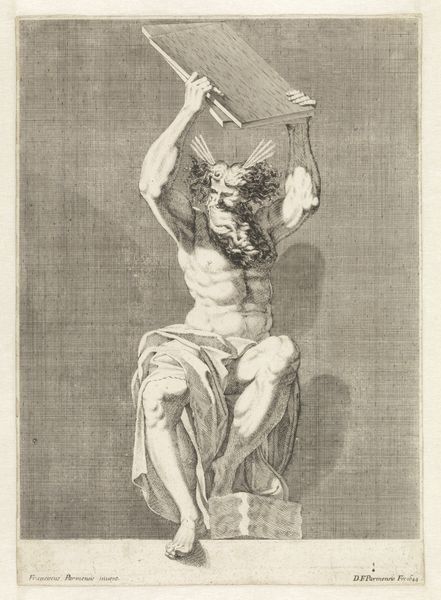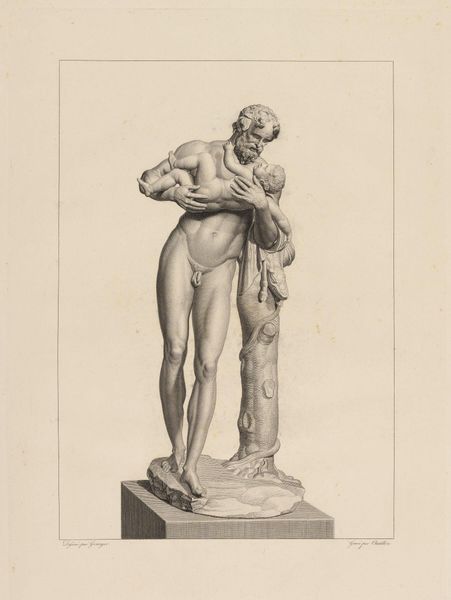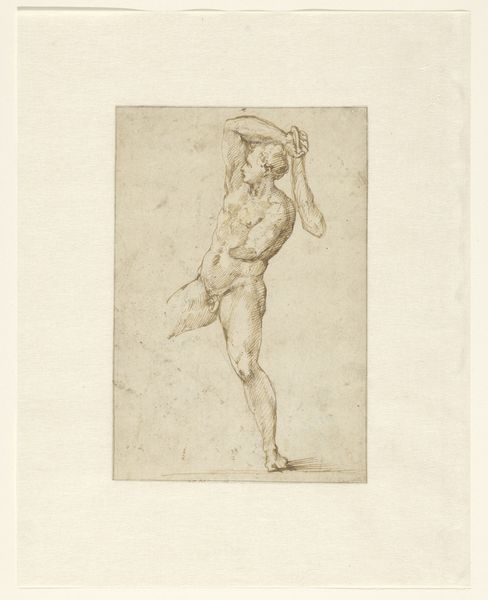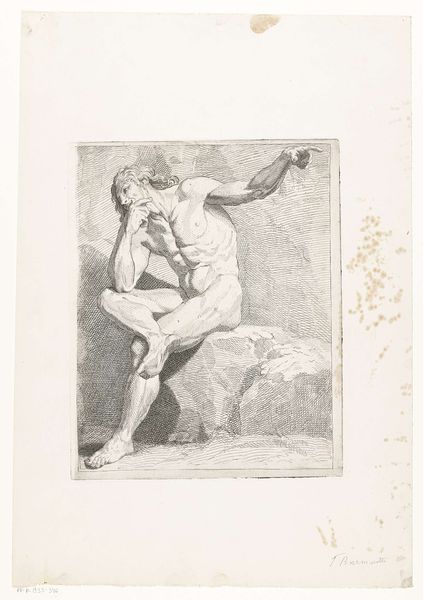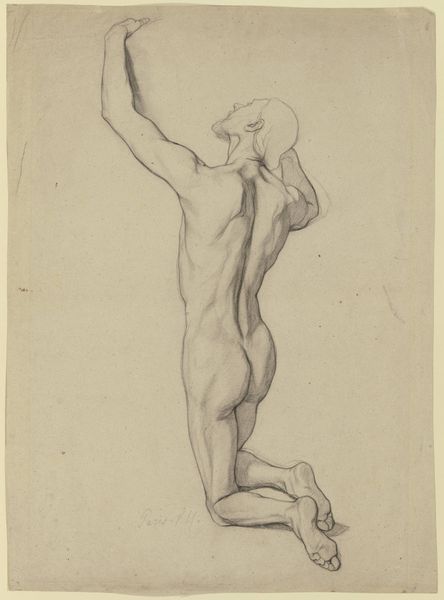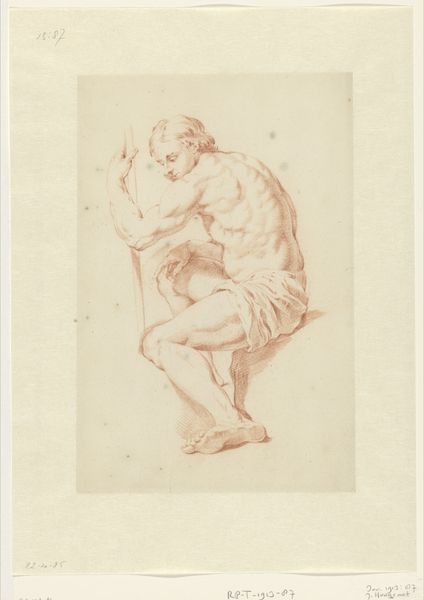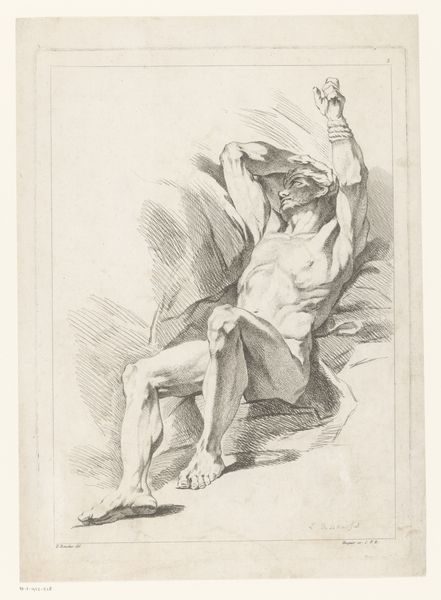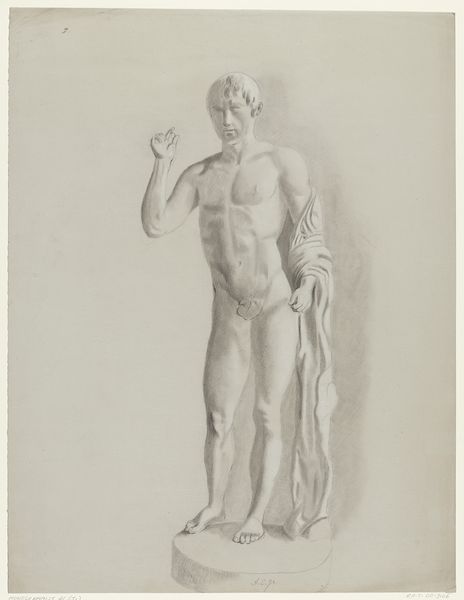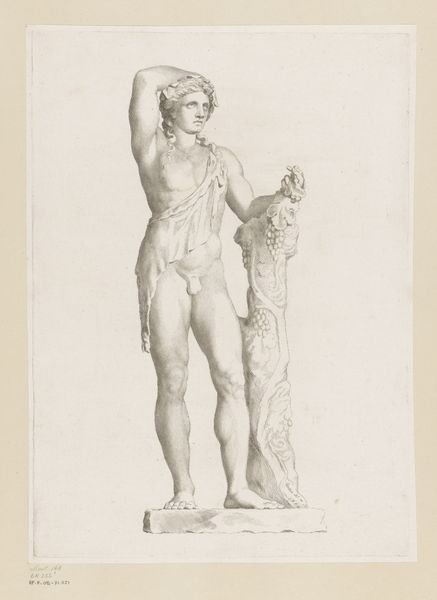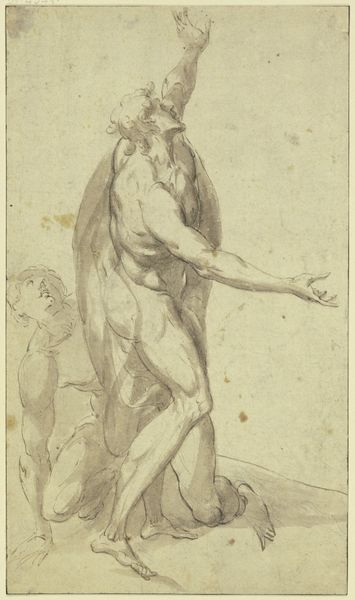
drawing, paper, pencil
#
drawing
#
baroque
#
pencil sketch
#
classical-realism
#
figuration
#
paper
#
pencil
#
nude
Dimensions: height 505 mm, width 322 mm, height 368 mm, width 238 mm
Copyright: Rijks Museum: Open Domain
Curator: Standing before us is "Statue of Mercury with a putto at his feet," a drawing by Claude Mellan, created sometime between 1631 and 1637. It resides here at the Rijksmuseum. Editor: My first impression is of stillness, a classical tranquility rendered with surprising delicacy given the subject's typical association with vigor and trade. The restrained palette contributes to that, a monochromatic dance of light and shadow. Curator: Indeed. This drawing provides an interesting perspective when viewed through the lens of artistic patronage and power structures of the era. Mercury, traditionally a symbol of commerce, communication, and even trickery, gains further nuance when seen against the backdrop of burgeoning merchantilism, religious power and colonial expansion during the baroque period. Mellan's choice to depict the god in such a serene state invites contemplation on the relationship between power and divine grace. Editor: Yes, I find the pencil work utterly compelling. Notice the texture achieved through delicate hatching and cross-hatching, defining musculature and drapery with superb precision. The fall of light and the construction of form are so considered. Note, for instance, how Mercury’s posture, that subtle contrapposto, enhances the overall sense of poised dynamism. Curator: The choice of representing Mercury alongside a putto— a representation of childish innocence - also provides a symbolic contrast that might be interpreted in various ways. Considering contemporary socio-political realities, what stories about childhood, mentorship and even class division were being transmitted and validated in those depictions of mythological subjects. Editor: Fascinating. Perhaps that's why, for me, the appeal also lies in Mellan's successful handling of line and tonal gradation which grants the drawing a unique surface tension—simultaneously inviting and self-contained. It really rewards close looking. Curator: And that engagement speaks, I think, to the enduring legacy of art that sparks continuous re-evaluation. It allows us, from our contemporary standpoints, to investigate history and cultural values in a dynamic way. Editor: Absolutely. It’s the marriage of historical insight and artistic finesse that allows "Statue of Mercury..." to continue provoking debate, centuries after its creation.
Comments
No comments
Be the first to comment and join the conversation on the ultimate creative platform.
